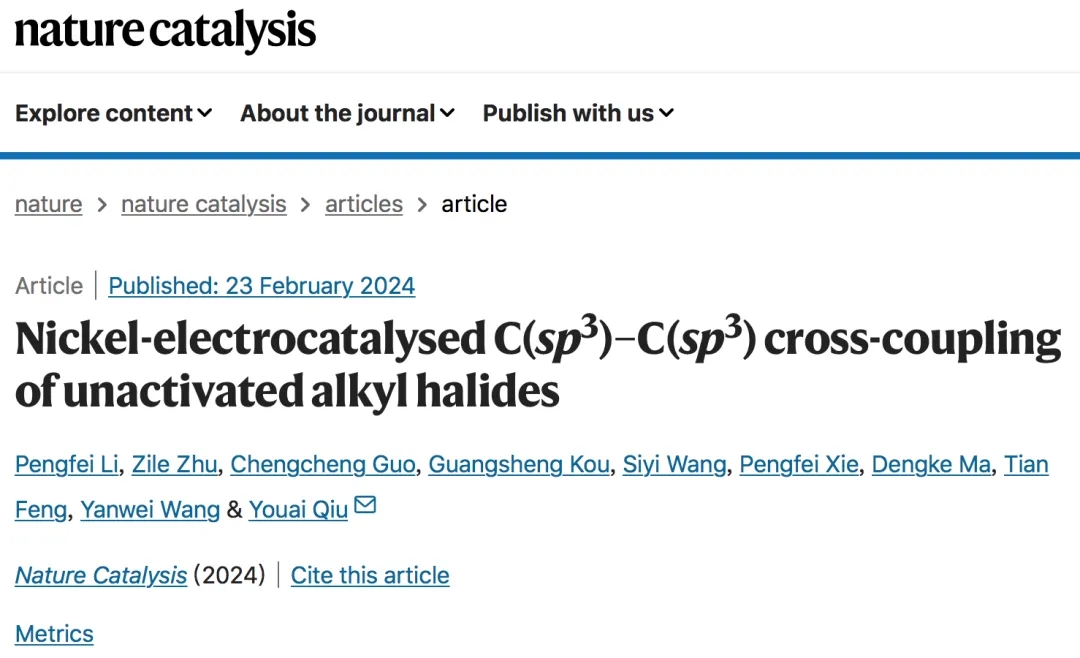
C(sp3)–C(sp3) bonds are ubiquitous manifolds in organic molecules, going from simple chemical reagents to complicated natural products, from bioactive compounds to functional polymers and materials. Notably, it has been suggested that the clinical success of drug molecules was highly correlated to its proportion of C(sp3) atoms in the structure, where an increased number of C(sp3) atoms can alter the spatial conformation and hydrophilic/lipophilic properties of the molecule. Therefore, efficient methodologies for the construction of C(sp3)–C(sp3) bonds are always in demand and attractive in modern organic synthesis. Approaches ensured by the reaction between alkyl halides and sp3-hybridized carbon nucleophiles, generally being organometallic reagents, such as Grignard reagents, organozinc, organoboron and so on, stood out as a typical strategy, which proceeded either by transition metal-catalysed heterocoupling or direct nucleophilic substitution. However, given issues with preparation, handling, stability and functional group tolerance, their practical applications were limited, particularly in the fabrication of complicated natural products bearing multiple sensitive functional groups, which could react with organometallic reagents. In fact, these organometallic nucleophiles are usually obtained from organic halides. Methods using commonly available and easily prepared alkyl halides, termed as cross-electrophile coupling (XEC), could not only reduce at least one step count and simplify the reaction operation with enhanced economic efficiency, but also provide improved functional group compatibility. However, achievements on XEC of alkyl halides are still elusive. Pioneering explorations by the group of Gong have made tremendous efforts in this field, but drawbacks including the requirement of stoichiometric reductants or expensive halogen abstractors limited the application of XEC. Organic electrosynthesis has grown to be an enabling technology in chemical fabrication in the past decades as it utilizes renewable and easily available electricity to replace traditional redox reagents, and thus being more sustainable by circumventing the use of stoichiometric chemicals and reducing chemical waste. Meanwhile, its capacity of generating active radical species by single-electron transfer (SET) process creates new synthetic opportunities.
Recently, Youai Qiu’s group have developed a nickel-catalysed electrochemical cross-coupling of unactivated alkyl halides to construct synthetically useful C(sp3)–C(sp3) bonds, affording a series of structural diverse compounds with a C(sp3)–C(sp3) linkage. The heterocoupling could be with primary–primary halides, primary–secondary halides, primary–tertiary halides or secondary–secondary halides, with excellent functional group compatibility and wide applications. The generality, high reactivity and selectivity would make this established method a good choice for C(sp3)–C(sp3) bond construction. A plausible nickel(I/II/III) mechanism involving alkyl radical generation was supported by the mechanistic experiments, DFT calculations, CV and square wave voltammetry experiments. They envisaged that the tolerance of natural product structures would bring opportunities for its further applications in organic synthesis and drug discovery. Relevant achievements were published in Nature Catalysis, 2024, DOI: 10.1038/s41929-024-01118-3.